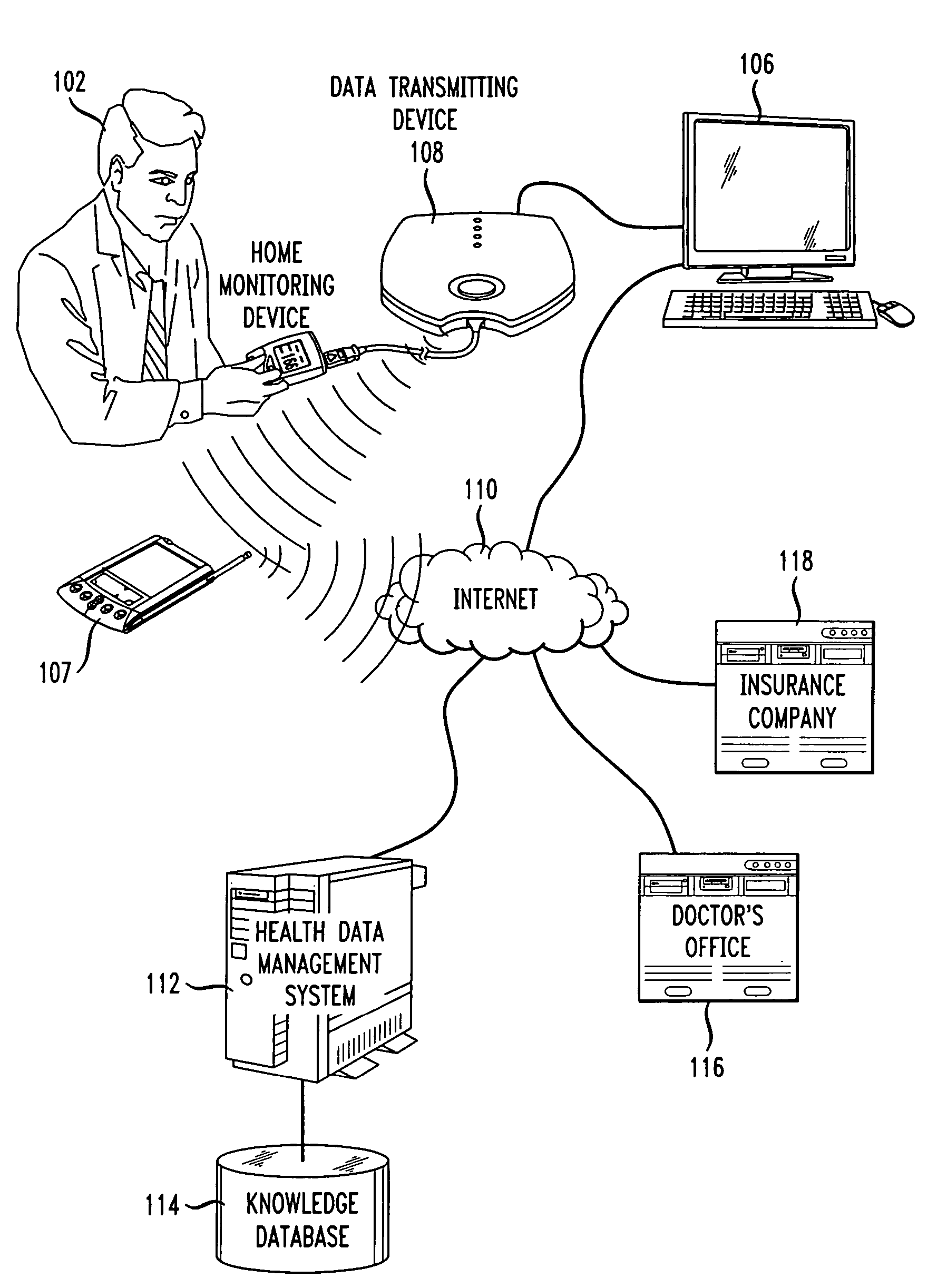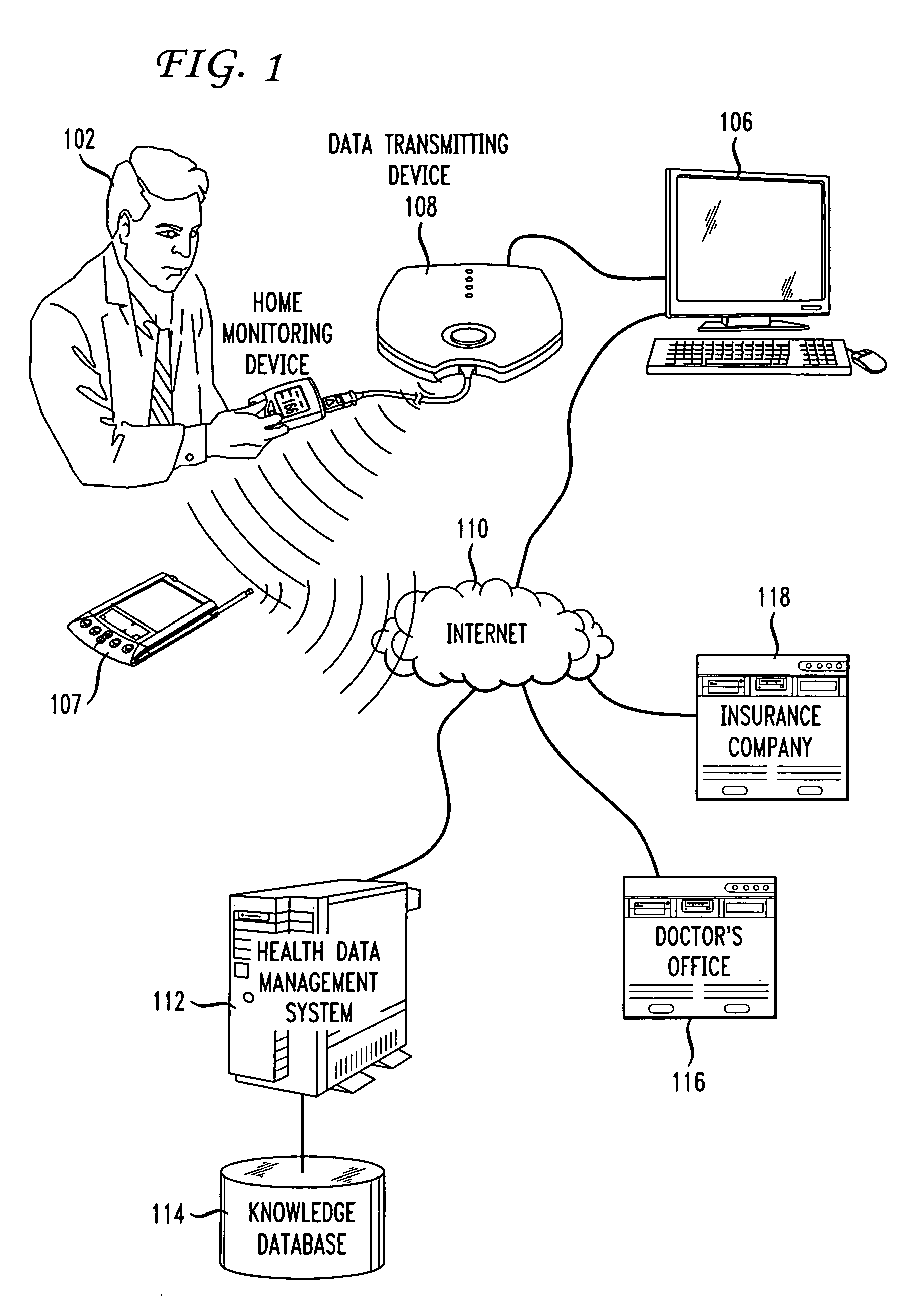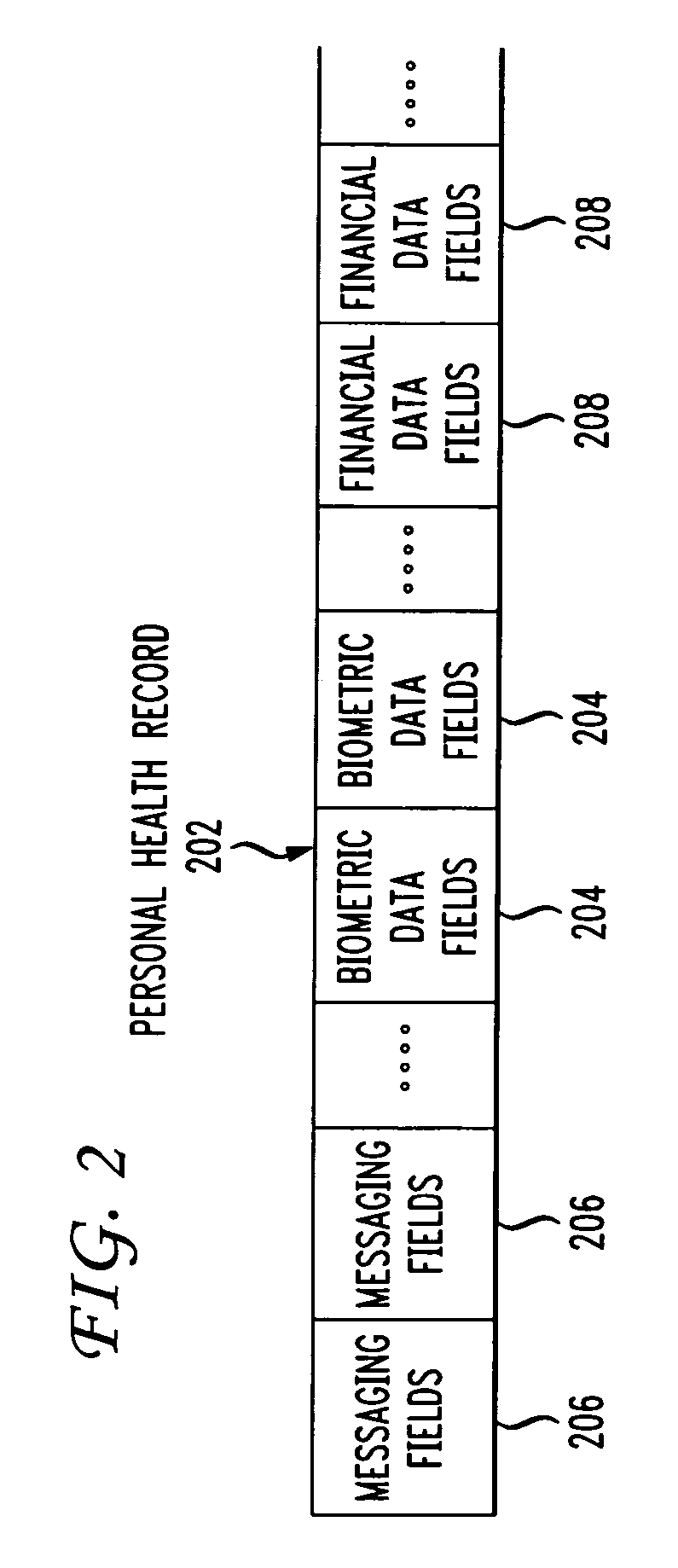Methods and systems for monitoring and enhancing patient compliance with a health treatment program
a technology for monitoring and enhancing patient compliance, applied in the field of methods and systems for improving patient compliance with a health treatment program, can solve the problems of lack of adherence, increased health care costs, and increased costs for patients, and achieve the effects of improving patient compliance, improving patient satisfaction, and improving patient satisfaction
- Summary
- Abstract
- Description
- Claims
- Application Information
AI Technical Summary
Benefits of technology
Problems solved by technology
Method used
Image
Examples
Embodiment Construction
[0018] Reference will now be made in detail to a preferred embodiment of the invention. An example of the preferred embodiment is illustrated in the accompanying drawings. While the invention will be described in conjunction with a preferred embodiment, it will be understood that it is not intended to limit the invention to one preferred embodiment. To the contrary, it is intended to cover alternatives, modifications, and equivalents as may be included within the spirit and scope of the invention as defined by the appended claims.
[0019] Methods and systems for encouraging patients to follow healthcare treatment programs by providing customized feedback while at the same time measuring the effectiveness of the treatments are described. Methods of the present invention are interactive wherein the patient also provides feedback rather than simply being an end-point where the process stops. The process of the present invention resembles a feedback loop in which the patient is viewed no...
PUM
 Login to View More
Login to View More Abstract
Description
Claims
Application Information
 Login to View More
Login to View More - R&D
- Intellectual Property
- Life Sciences
- Materials
- Tech Scout
- Unparalleled Data Quality
- Higher Quality Content
- 60% Fewer Hallucinations
Browse by: Latest US Patents, China's latest patents, Technical Efficacy Thesaurus, Application Domain, Technology Topic, Popular Technical Reports.
© 2025 PatSnap. All rights reserved.Legal|Privacy policy|Modern Slavery Act Transparency Statement|Sitemap|About US| Contact US: help@patsnap.com



